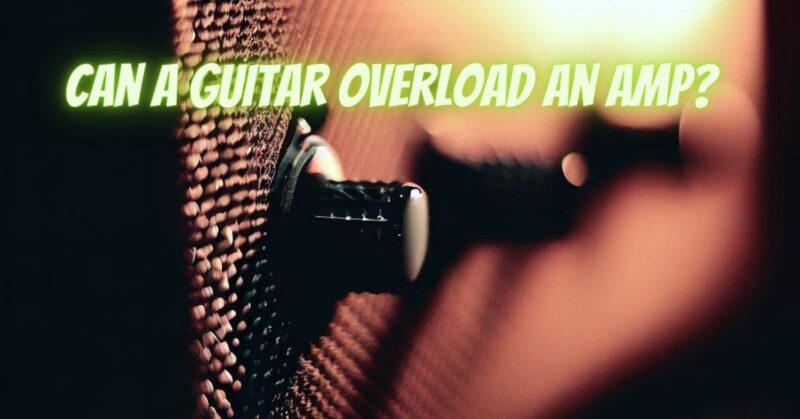The synergy between a guitar and its amplifier is the cornerstone of the musician’s sonic palette. However, concerns often arise about the potential of overloading an amplifier when playing certain guitars. This article delves into the intricate relationship between guitars and amplifiers, exploring whether a guitar can indeed overload an amp and the factors that contribute to this phenomenon.
Understanding Overloading:
1. Signal Strength:
- Overloading an amplifier occurs when the input signal is too strong for the amplifier’s circuitry to handle.
2. Clipping:
- When an amplifier is overloaded, it enters a state of clipping, distorting the signal and affecting the sound quality.
3. Impedance Mismatch:
- Mismatched impedance between the guitar and the amplifier can lead to signal distortion and potential overloading.
Can a Guitar Overload an Amp?
1. Active Pickups:
- Guitars equipped with active pickups produce higher output levels, which could potentially overload an amplifier’s input stage.
2. High-Output Guitars:
- Guitars with high-output pickups or boost pedals can produce a stronger signal that might lead to overloading.
Factors Influencing Overloading:
1. Amp Sensitivity:
- The sensitivity of the amplifier’s input stage determines how it handles varying signal strengths.
2. Volume and Gain Settings:
- High volume and gain settings increase the likelihood of overloading, particularly with powerful pickups.
3. Pedals and Effects:
- Effects pedals, especially boost or distortion pedals, can amplify the guitar’s signal and potentially overload the amp.
Preventive Measures:
1. Volume Management:
- Adjust the guitar’s volume knob or use the amplifier’s volume controls to manage the signal strength.
2. Gain Adjustment:
- Use the amplifier’s gain control to regulate the signal input and avoid excessive clipping.
3. Attenuators:
- Attenuators placed between the guitar and the amp can help manage signal strength and prevent overloading.
4. Impedance Matching:
- Ensure that the impedance of the guitar and the amp is compatible to minimize signal distortion.
While it is possible for a guitar to overload an amplifier, the likelihood depends on various factors, including the guitar’s pickups, the amp’s sensitivity, and the settings used. Understanding the interaction between your guitar and amplifier is key to managing signal strength effectively and avoiding unwanted distortion. By employing preventive measures such as adjusting volume and gain settings, using attenuators, and ensuring impedance compatibility, you can strike a harmonious balance that preserves your amplifier’s sound quality and optimizes your musical experience.


